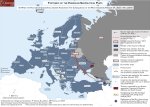Map 3/3 Tectonics of the European Geopolitical Plate. When the Fracture of Geographical Europe Accelerates : The Consequences of the War in Ukraine (February 24, 2022 - April 2024)
Par , , le 4 juin 2024.
Design : B. Lambert and P. Verluise. Production : B. Lambert AB Pictoris.
AB Pictoris is a young French company founded by Blanche Lambert, an independent cartographer. Passionate about cartography and geopolitics, she obtained a Master’s degree in Geopolitics (cyber course, IFG, Paris VIII) and in Geostrategy (Sciences Po Aix) after a degree in Geography and Regional Planning (Paris I).
Commentary on the map : Pierre Verluise, Doctor in Geopolitics, founder of Diploweb.com
An arc of fracture extends from Finland, where Moscow attempts destabilization maneuvers since the country joined NATO, to the Caucasus, passing through the Baltic States bordering Russia and, of course, Ukraine, and even Moldova. The latter is weakened by Russian maneuvers in Transnistria, which has been secessionist since the early 1990s. Russia could significantly increase its troops stationed in Transnistria to attack Ukraine from the east to link up with Crimea… or even to the west : Moscow would then attack Moldova and even Romania, thus NATO. Along this arc of fracture, Belarus plays in favor of Russia, but the Lukashenko regime could pay dearly for this alignment if Russia is not victorious in its renewed war in Ukraine.
Large format map at the bottom of the page, JPG and PDF
Voir la carte et le texte en français
AT THE INITIATIVE of Moscow, the resurgence of the Russian war against Ukraine on February 24, 2022, accelerated the new fracturing of geographical Europe. Far from the unification of geographical Europe fantasized by some during the post-Cold War period, geographical Europe remains divided, even fractured, but along shifted lines and by different groupings. However, there is a common point during and after the Cold War : the fear of the USSR, which became post-Soviet Russia, produces grouping effects among those who want to protect themselves from it.
After first violating Ukraine’s borders in 2014 (illegal annexation of Crimea, support for separatists in Donbass), Russia reignited a war against Ukraine on February 24, 2022, that it dared not name. Ukraine quickly expelled Russian troops from the north of its territory, but Russia gained ground in the east and south of Ukraine.

From March 2022, Russia was excluded from the Council of Europe, reducing the number of member states from 47 to 46 and significantly decreasing its land area. Belarus [1] served as a rear base for the Russian army to exert pressure and carry out operations against Ukraine. Fraudulently re-elected in 2020, the Belarusian dictator Alexander Lukashenko increasingly fell under the influence of Vladimir Putin. Many Western countries imposed sanctions against Belarus and Russia. However, Russia demonstrated a form of resilience, partly explainable by the executive’s grip on the economy and the press.
The Caucasus and Ukraine more than ever form a shear zone linked to friction of influence between the Russian plate and the NATO-EU plate. This expression ’NATO-EU’ is practical but misleading. Indeed, 23 of the 27 EU member states are members of NATO, which now includes 32 members (NATO-32). Most EU member states are therefore also members of NATO-32, including France. However, several EU countries are not part of NATO, and several NATO countries are not part of the EU. Nevertheless, European treaties articulate the relations between these two institutions, and the renewed pressure from the Russian war in Ukraine puts NATO in a fairly favorable position as the last (if not the first) guarantor.
An arc of fracture extends from Finland, where Moscow attempts destabilization maneuvers since the country joined NATO, to the Caucasus, passing through the Baltic States bordering Russia and, of course, Ukraine, and even Moldova. The latter is weakened by Russian maneuvers in Transnistria, which has been secessionist since the early 1990s. Russia could significantly increase its troops stationed in Transnistria to attack Ukraine from the east to link up with Crimea… or even to the west : Moscow would then attack Moldova and even Romania, thus NATO. Along this arc of fracture, Belarus plays in favor of Russia, but the Lukashenko regime could pay dearly for this alignment if Russia is not victorious in its renewed war in Ukraine.
Georgia is under pressure from Russia, which seeks to contain forces favoring a rapprochement with NATO and the EU. Azerbaijan uses EU sanctions against Russia to strengthen its energy cooperation with the EU but does not refrain from contributing in May 2024 to destabilization operations in an EU and NATO member country – France – in an influence operation in New Caledonia [2]. Finally, with Turkey at its back, Armenia pays dearly for choosing Russia to support it against Azerbaijan. Yerevan recently lost control over the Nagorno-Karabakh enclave in a disturbingly indifferent manner. This is what happens when you bet on the wrong horse at such a pivotal moment.
This arc of fracture that crosses geographical Europe, whose conventional eastern limit is the Urals, could remain a crisis zone for some time, leaving marks in geopolitical representations, thus generating or reinforcing structuring effects.
Internal factors, whether endogenous or manipulated by external powers, can weaken the cohesion of support for Ukraine. External factors – such as the elections in the United States, the Taiwan issue, crises in the Middle East and Africa, etc. – can reshuffle priorities and thus the strategic landscape.
From experience, the countries of the European Union, with their minds clouded by ideology, seem to wait until they have no choice but to start considering the strategic reality of things. They have a long way to go, as their demographic, economic, and strategic fundamentals are weakened. Their defense efforts are late and still insufficient.
In order to be truly mobilized, the EU member states need to be able to reduce the maneuvers of foreign powers and engage in coherent efforts on all fundamentals of power over a long period to turn this pressure into a rebound factor. Otherwise, they will pay a high price for it. Vae victis [3].
View the map in high print quality PDF format
Map in JPG format below.
Copyright for the text May 2024 - Verluise/Diploweb.com.
Copyright for the map April 2024 - Lambert-Verluise/Diploweb.com
Translation of the map and text, from French to English, AB Pictoris
 |
Titre du document : Map. Tectonics of the European Geopolitical Plate. When the Fracture of Geographical Europe Accelerates : The Consequences of the War in Ukraine (February 24, 2022 - April 2024) View the map in high print quality PDF format. Design and production of the map : AB Pictoris. AB Pictoris is a young French company founded by Blanche Lambert, an independent cartographer. Document ajouté le 4 juin 2024 Document JPEG ; 545725 ko Taille : 1600 x 1145 px Visualiser le document |
An arc of fracture extends from Finland, where Moscow attempts destabilization maneuvers since the country joined NATO, to the Caucasus, passing through the Baltic States bordering Russia and, of course, Ukraine, and even Moldova.
Mots clés — Key words
Ukraine , NATO , Russia , Moldavie , Map , Geopolitics , Georgia , War , Strategy , European project , Estonia , Lithuania , Belarus , Azerbaijan , 2024Pour ne rien rater de nos nouvelles publications, abonnez-vous à la Lettre du Diploweb !
[1] N.B. : Belarus has never been a member of the Council of Europe.
[2] Cf : SGDSN, Viginum, « Nouvelle-Calédonie : manœuvres informationnelles impliquant des acteurs azerbaïdjanais », 17 mai 2024, à l’adresse https://www.sgdsn.gouv.fr/publications/nouvelle-caledonie-manoeuvres-informationnelles-impliquant-des-acteurs-0
[3] « Vae victis » is a Latin expression meaning ’Woe to the vanquished,’ spoken by the Gallic chieftain Brennos who had defeated Rome around 390 B.C.
Direction

Directeur, P. Verluise
Conseil scientifique
Mentoring et coaching géopolitique
Présenter le Diploweb.com
Charte du site
Auteurs
Proposer un article
Retrouvez la chaîne Diploweb sur :








